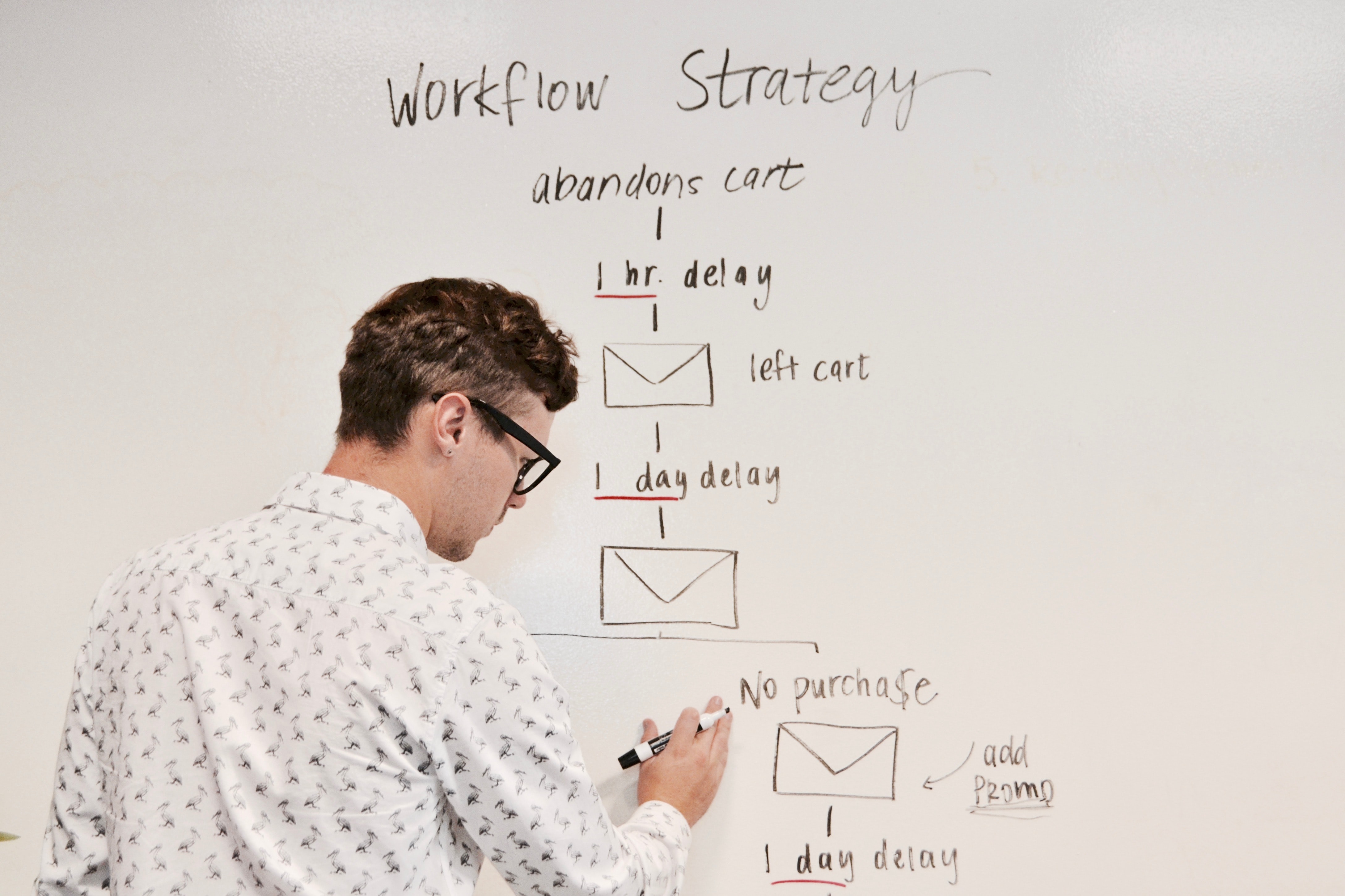How to make the best decision to achieve our goals

Making decisions is a crucial part of achieving our goals. However, knowing which decision is right can take time and effort. This article will explore a step-by-step process for making the best decision to achieve our goals. We will cover topics such as defining the goal, identifying options, gathering information, considering long-term consequences, assessing risks, seeking advice, using decision-making tools, trusting intuition, taking action, and reviewing and reflecting on the decision-making process. By following these steps, you can make informed decisions to help you achieve your goals. Whether you are faced with a big decision or just trying to make a small improvement in your life, this guide will provide you with the tools and knowledge you need to make the best choice.

Clearly state the goal you wish to achieve, and ensure that it is specific, measurable, and achievable.
When it comes to achieving success in any endeavor, it is crucial to have a clear understanding of what you want to achieve. This is where setting a goal comes in. A goal is a specific, measurable, and achievable outcome that you are working towards.
First, let’s talk about why it is so important to define your goal clearly. When you clearly understand what you want to achieve, you are more likely to stay motivated and focused on the task at hand. Additionally, having a clear goal makes it easier to set objectives and create a plan of action to achieve that goal. Without a clear goal, getting sidetracked and losing sight of what you are working towards can be easy.
Now, let’s talk about the criteria for a good goal. A goal should be specific, measurable, and achievable.
Specific means that the goal is clear and well-defined. For example, instead of saying “I want to be fit,” a specific goal would be, “I want to lose 10 pounds in 3 months by following a regular exercise routine.” Measurable means that the goal can be quantified and tracked. In the previous example, the goal is measurable because it states a specific amount of weight to be lost within a specific timeframe. Achievable means that the goal is realistic and within reach. It should be challenging but not impossible to achieve. When creating a goal, it’s essential to ensure that it meets these criteria. If your goal is not specific, measurable, and achievable, it will be challenging to stay motivated and make progress toward it.

Consider all possible options for achieving the goal, and evaluate the pros and cons of each.
Once you have set a specific, measurable, and achievable goal, the next step is to identify the options for achieving it. This is a crucial step as it allows you to consider all possible strategies and evaluate the pros and cons of each before making a decision.
When achieving a goal, there are usually multiple options to consider. For example, if your goal is to lose weight, you could choose to follow a specific diet plan, hire a personal trainer, or join a gym. Each option has its own set of advantages and disadvantages, and it’s important to evaluate these before making a decision.
The first step in identifying the options is brainstorming a list of potential strategies. It’s essential to be as comprehensive as possible and not to rule out any ideas. Once you have a list of options, you can start evaluating the pros and cons of each.
When assessing the options, it’s important to consider cost, time commitment, effectiveness, and feasibility factors. For example, a personal trainer may be more effective than a gym membership, but it may also be more expensive and require a more significant time commitment. On the other hand, a gym membership may be more affordable and convenient, but it may not provide the same level of support and accountability as a personal trainer.
It’s also important to consider personal preferences and lifestyle when evaluating the options. For example, a gym membership may not be the best option if you are not comfortable working out in a gym. Similarly, a diet plan that requires a lot of meal preparation may not be feasible if you have a busy schedule.
By considering factors such as cost, time commitment, effectiveness, and feasibility, as well as personal preferences and lifestyle, you can make an informed decision and choose the best strategy for achieving your goal.

Research and gather information relevant to the goal and the options, and use this information to make an informed decision.
Once you have identified the options and evaluated their pros and cons, gathering information relevant to the goal and the options is next. Researching and acquiring relevant data is crucial for making an informed decision and ensuring that the chosen strategy is the most effective one.
Before making a decision, gathering as much information as possible about the goal and the options is essential. This will help you to understand the different strategies and their potential outcomes, as well as any potential challenges or obstacles that may arise. The information can be gathered from various sources, including books, articles, websites, and experts in the field.
When gathering information, it’s important to be as thorough as possible and to consider multiple perspectives. This will help you to gain a well-rounded understanding of the topic and to identify any biases or inaccuracies in the information.
Once you have gathered the information, it’s important to use it to make an informed decision. This means considering the information in relation to the goal and the options and assessing how it may impact the outcome. For example, if the goal is to lose weight, and one of the options is a specific diet plan, research on the effectiveness and safety of that diet should be considered before making a decision.
It’s also important to remember that information is constantly changing and evolving, and staying up to date with new developments is essential. Regularly revisiting and re-evaluating the information and strategies is a good practice to ensure that the decision is still the best.

Think about the long-term consequences of each option and how it will affect you and others.
When making a decision, it’s important to consider the immediate outcome and the long-term consequences of each option. This means thinking about how the chosen strategy will affect you and others in the future.
When making a decision, it’s easy to get caught up in the present and focus solely on the immediate outcome. However, it’s essential to consider each option’s long-term consequences. This means thinking about how the chosen strategy will impact you and others in the future. For example, if the goal is to lose weight, a short-term solution such as a fad diet may lead to quick results, but it may not be sustainable in the long run and may have negative consequences on one’s health.
To consider the long-term consequences, it’s essential to think about the following:
The sustainability of the chosen strategy: Will it be possible to maintain the outcome in the long run? The potential risks and drawbacks: What are the potential negative consequences of the chosen strategy? The impact on others: How will the chosen plan affect the people around you, such as family and friends? When analyzing the long-term consequences, it’s also important to consider the bigger picture. For example, if the goal is to improve the environment, a strategy that may positively impact the environment in the long term but may have negative consequences on people’s livelihoods in a short time should be reconsidered.
It’s also important to remember that the future is uncertain, and it’s impossible to predict all potential outcomes. However, by considering the long-term consequences, you can make a more informed decision that takes into account the potential impact on the future.

Assess the risks associated with each option and determine which ones are acceptable.
When making a decision, it’s crucial to consider the potential benefits and risks associated with each option. Assessing the risks allows you to understand the potential threats and make an informed decision on which risks are acceptable. Risks are inherent in any decision, and it’s essential to understand and evaluate them before making a choice. By assessing the risks, you can identify potential problems that may arise and decide if they are acceptable in light of the potential benefits.
When evaluating the risks, it’s important to consider the following:
The likelihood of the risk occurring: How probable is it that the risk will happen? The severity of the risk: How severe are the potential consequences of the risk? The controllability of the risk: Can the risk be prevented or mitigated? Once the risks have been identified, it’s important to determine which ones are acceptable. This means weighing the potential benefits against the potential risks and deciding if the benefits outweigh the risks. It’s essential to remember that different levels of risk are acceptable for different situations and goals. For example, a high level of risk may be appropriate for a business venture with a high-profit potential, whereas a low level of risk may be more appropriate for a personal decision with significant personal consequences.
It’s also important to remember that the assessment of risks is an ongoing process. As new information arises, it’s essential to re-evaluate the risks and reassess the acceptability level. By evaluating the potential threats and determining acceptable levels of risk, you can make an informed decision that considers both the potential benefits and risks.

Seek advice from experts or trusted friends and family, and consider their perspectives on the decision.
Making important decisions can be challenging, and seeking advice from experts or trusted friends and family can provide valuable insights and perspectives. Consulting with others can help you to gain a different perspective, consider new information, and feel more confident about your decision.
When making a decision, it’s important to consider multiple perspectives. Consulting with experts or trusted individuals can provide valuable insights that may not have been considered. For example, if the goal is to start a business, seeking advice from a business consultant or a successful entrepreneur can provide valuable information on the industry, market trends, and potential challenges.
When seeking advice, it’s important to choose the right people. Experts in the field can provide valuable information and insights, whereas trusted friends and family can offer emotional support and a different perspective. It’s essential to consider the source of advice, and it’s recommended to seek advice from multiple sources to gain a well-rounded perspective.
When considering the views of others, it’s important to keep an open mind and not dismiss any information or advice. It’s also important to consider the advice’s credibility and reliability and weigh the pros and cons of each perspective.
It’s also important to remember that the final decision is yours, and you should not feel pressured to follow the advice of others. Ultimately, the decision should align with your values, goals, and priorities.
By keeping an open mind, considering the advice’s credibility and reliability, and weighing each perspective’s pros and cons, you can make a more informed decision that aligns with your values, goals, and priorities.

Use decision-making tools such as decision matrices, pros and cons lists, or decision trees to help evaluate the options.
Making decisions can be complex, and utilizing decision-making tools can make it easier to evaluate options and make a well-informed choice. These tools can help to organize information, weigh the pros and cons of different options, and identify potential risks and benefits.
Decision-making tools such as decision matrices, pros and cons lists, and decision trees can help to make the decision-making process more structured and logical. These tools can be used at different stages of the decision-making process, depending on the complexity of the decision and the information available.
A decision matrix is a tool that can be used to evaluate options based on multiple criteria. It’s a table that lists the options and criteria and assigns a weight to each criterion. The options are then scored based on their performance against each criterion, and the scores are used to determine the best option.
A pros and cons list is a simple tool that can evaluate options by listing the benefits and drawbacks of each option. This can be a quick and easy way to gain a general understanding of the options and to identify the pros and cons of each.
A decision tree is a tool that can be used to evaluate options by breaking down a decision into smaller, more manageable parts. It’s a diagram that represents the different options and the potential outcomes of each option. It can be used to identify each option’s risks and benefits and determine the best course of action.
When using decision-making tools, it’s important to be as objective as possible and to consider all relevant information. It’s also important to remember that decision-making tools can only be as good as the information and criteria used to evaluate the options. By being objective and considering all relevant information, these tools can help to assess options and make a well-informed choice.

Trust your intuition and gut feelings, but be sure to consider them in light of the information you have gathered.
Decision-making is not only about collecting information and analyzing options but also about trusting your intuition and gut feelings. Intuition is the ability to understand something instinctively without needing conscious reasoning. It can provide valuable insights and can guide you toward the best decision.
Intuition can be a powerful tool in decision-making as it can give a sense of direction and help to identify the best options. It can also help to identify potential risks and benefits that may not be immediately obvious. However, it’s important to remember that intuition should not be the sole basis for a decision and should be considered in light of the information gathered.
When trusting your intuition, paying attention to your inner voice and gut feelings is important. These can provide valuable insights and can guide you toward the best decision. It’s also important to consider the context and the situation, as intuition may be affected by emotions and past experiences.
It’s also important to consider the credibility and reliability of the intuition. Sometimes intuition can be influenced by unconscious biases or past experiences, and it’s essential to be aware of them and consider them in light of the gathered information.
When considering intuition, it’s also important to consider each option’s potential risks and benefits and weigh them against the collected information. This can provide a more well-rounded perspective and help identify the best decision. You can make a more informed decision by paying attention to your inner voice and gut feelings, considering the context and situation, and considering the potential risks and benefits.

Once a decision is made, take action promptly and work towards achieving the goal
Making a decision is only the first step in achieving a goal; taking action and implementing the decision is the next crucial step. It’s important to make a decision and take the necessary steps to turn that decision into action.
Taking action promptly is important because it helps to keep the momentum going and increases the chances of achieving the goal. It’s essential to keep the decision from lingering and to start working towards achieving the goal as soon as possible. It’s also important to have a plan in place outlining the specific steps that need to be taken and the timeline for achieving the goal.
When taking action, it’s important to be realistic and to set achievable milestones. This can help to keep the goal manageable and to track progress along the way. It’s also important to be flexible and willing to adjust the plan if necessary.
Once the plan is in place, it’s important to start taking action and working towards achieving the goal. This means putting the plan into action and taking the necessary steps to achieve the goal. It’s also important to stay focused and not get sidetracked by other distractions.
It’s also important to stay motivated and to keep the end goal in mind. Celebrating small successes along the way can help to keep motivation high and to remind us of the progress made.

Review the decision-making process and reflect on what worked well and what could be improved for future decisions.
Making a decision is not a one-time but a continuous process. Reviewing and reflecting on the decision-making process can help to identify what worked well and what could be improved for future decisions.
Reviewing the decision-making process is vital because it allows you to evaluate the decision’s effectiveness and identify any areas for improvement. It’s a way to assess the outcome of the decision and determine if the goal was achieved. It’s also an opportunity to reflect on the decision-making process and identify any biases, assumptions, or flaws that may have affected the outcome.
When reviewing the decision-making process, it’s important to consider the following:
- The outcome of the decision: Did the decision achieve the desired goal?
- The effectiveness of the decision-making tools used: Were the decision-making tools effective in evaluating the options?
- The accuracy of the information gathered: Was the information accurate and reliable?
- The effectiveness of the decision-making process: Was the decision-making process effective in identifying the best decision?
Reflecting on the decision-making process is also an important step in identifying areas for improvement. It’s an opportunity to think about what could have been done differently and how to improve the decision-making process for future decisions. Reflecting on the decision-making process can also help to identify any personal biases or assumptions that may have affected the outcome and to improve on them.
In conclusion, making the best decision to achieve our goals requires a systematic and thorough approach. By clearly defining the goal, identifying and evaluating all possible options, gathering relevant information, considering long-term consequences, assessing risks, seeking advice, using decision-making tools, trusting our intuition, taking action, and reviewing and reflecting on the decision-making process, we can increase our chances of making the best possible decision. It is important to remember that decision-making is an ongoing process, and we can continuously improve our approach and learn from our experiences. By following these steps, we can set ourselves up for success and work towards achieving our goals.
References
Goal-setting is important as it helps you reach greater success and satisfaction in every aspect https://www.briantracy.com/blog/personal-success/goal-setting/
What Is A Decision Matrix & How Can You Use It? https://www.techinweb.com/decision-matrix/
Do you ever procrastinate to avoid unpleasant tasks or assignments? Do you find it hard to get https://learningcenter.unc.edu/tips-and-tools/motivation/
Six common sources of startup funding, a brief explanation of each, and the benefits and hesitat. https://www.under30ceo.com/6-sources-of-startup-funding-and-their-pros-and-cons/
Goal-Setting https://inside.ewu.edu/calelearning/psychological-skills/goal-setting/
What is Goal Setting and How to Do it Well https://positivepsychology.com/goal-setting/
The Neuroscience of Goals and Behavior Change https://www.ncbi.nlm.nih.gov/pmc/articles/PMC5854216/
Locke’s Goal-Setting Theory https://www.mindtools.com/azazlu3/lockes-goal-setting-theory
Goal Missed, Self Hit: Goal-Setting, Goal-Failure, and Their Affective, Motivational, and Behavioral Consequences https://www.ncbi.nlm.nih.gov/pmc/articles/PMC8490751/
5 SMART Goals Examples for Risk Management https://www.developgoodhabits.com/smart-goals-risk-management/
Goals Gone Wild: The Systematic Side Effects of Over-Prescribing Goal Setting https://www.hbs.edu/ris/Publication%20Files/09-083.pdf
Goal Setting: A Scientific Guide to Setting and Achieving Goals https://jamesclear.com/goal-setting
10 Effective Goal-Setting Techniques for Achieving Your Goals https://www.indeed.com/career-advice/career-development/goal-setting-techniques
Goal-Setting Tips to Create an Extraordinary Life https://jackcanfield.com/blog/powerful-goal-setting-tips/
Decision Making and Goal Setting https://careers.umbc.edu/students/discover/goals/
4: Decision Making and Goal Setting https://socialsci.libretexts.org/Bookshelves/Counseling_and_Guidance/Career_and_Life_Planning_(Martinez_and_Shaker)/04%3A_Decision_Making_and_Goal_Setting
The 6 Decision-Making Frameworks That Help Startup Leaders Tackle Tough Calls https://review.firstround.com/the-6-decision-making-frameworks-that-help-startup-leaders-tackle-tough-calls
A Leader’s Framework for Decision Making https://hbr.org/2007/11/a-leaders-framework-for-decision-making
What is a decision making framework? https://aese.psu.edu/teachag/curriculum/modules/bioethics/modules/copy2_of_introductory/4-scenarios/decision-making-framework
How To Create An Action Plan https://www.briantracy.com/blog/personal-success/how-to-create-an-action-plan/
Goals, objectives and reflective habits https://www.ed.ac.uk/reflection/reflectors-toolkit/goals-objectives-habits
The Power of Goal Setting https://careerhub.students.duke.edu/resources/the-power-of-goal-setting/
Reflect, Set, Go: Setting Worthwhile Goals For 2022 https://www.forbes.com/sites/forbescoachescouncil/2022/01/04/reflect-set-go-setting-worthwhile-goals-for-2022/?sh=286753a15c6f
